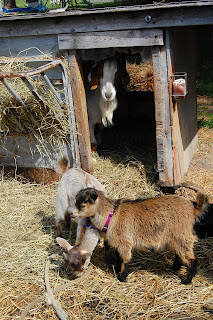...will remember David and his
boat the “Annie Buck”. As I was struggling to get one of my
special tools, an ancient Alps MD 5000, otherwise known as
the decal
printer to have, to work, I was interrupted with a pleasant surprise. It was David outside my
door yelling “Anyone want to go for a boat ride?” I've had a lot of
rides in all kinds of boats and ships, but I still and always will,
look forward to this one.

It's that time of year again. Fall is upon us and Watermen throughout the Chesapeake region are changing their rigs from crabbing gear to oystering gear. As you'll recall, the summers here can be very hot. To protect the waterman and his catch from the broiling heat, a Deadrise, the type of workboat most frequently used in the Chesapeake Bay, is often outfitted with a seasonal “canopy” (Don't call it a "roof").

There is a reason for the ride.We are bringing the boat to the town wharf where other watermen and neighbors come together in order to remove her canopy for the winter. It weighs hundreds of pounds and, despite its size, can easily be damaged. David will, in turn, go around to help other watermen take the canopies off of their boats. It's a rite of Autumn. In the near future we will be installing some winter equipment in another rite of the season - more on that when it happens...

David's co-pilot, “Keeper” is along for the ride. I've often heard that “dogs like trucks!” I can tell you that when a dog likes a boat... well... Let's just say that Keeper
loves his boat!
For this ride the sky is ominously dark, but no rain. The water's surface is like glass. As you'll recall, the “Annie Buck” has a planing hull. True to form, when David hit the throttle she virtually lept out of the water. What a ride. We live in a truly beautiful place. It's beautiful from the land, but it's beautiful in an entirely different way from the water.

It's a good thing that there are other watermen involved. They know just how to handle things so that nothing, including people gets damaged.
On the “Annie Buck” the support structure is this: the front edge of the canopy is supported by the roof of the pilot house. In the rear area it is supported by struts running from the floor of the cockpit to the canopy's frame. These struts are also bolted to the gunwhales to increase rigidity.
In preparation, David has removed most of the bolts in the struts, leaving those that remain loose. A stuck bolt, to be expected in the marine environment, can bring the whole process to a halt.

When the process begins, some people move to hold up the rear of the canopy frame; others unscrewing and punching out the remaining bolts from the struts. The struts crash to the floor and suddenly everyone is holding up the full weight of the canopy. It gets heavier when some people let go in order to step from the boat onto land. Once there, they resume their lifting and the canopy is moved just far enough from the boat that part of its frame can rest on some pilings allowing those of us, still in the boat, to get out and resume our positions. From there we carry it about 50 feet to a waiting trailer. (Unfortunately, I don't have photos of the process itself, because my hands were a bit full.)

On the trailer are 4 inverted bushel baskets. They are maneuvered to points that support the frame of the canopy. We can finally let it down. The canopy is much longer than the trailer, requiring a delicate balancing act to make sure that it doesn't come off of the trailer during the ride to David's house. I find it amazing to think that these lightweight baskets, only 4 of them, can support the hundreds of pounds that the canopy weighs. It's a good lesson in physics...
The ride home is beautiful again. You can see how different the boat looks when the canopy is absent. Things are opened up and brighter. The boat seems just a bit faster; perhaps an illusion, but it does weigh less and should be a bit more aerodynamic than it was with the canopy installed.
The whole lifting process took much less time than either trip, probably under 4 minutes. But, there is a level of intensity about it, with everyone seemingly choreographed to do the right thing at the right time. By comparison lifting it from the trailer, once home, was a quick task of laying down some cinder blocks and resting the canopy on them until it's needed next spring.

As I re-read this, I fear that I may be giving the impression that this was about having fun. No, it's just a small part of the very, very hard work that watermen do. For me, it is an honor and learning experience to partake. Hopefully, some of this information will be of help you as you work up your own model of the "Annie Buck".
I am grateful for the opportunity to be there and wish all of my waterman friends the best of success in the coming oyster season.
Funny thing, now that I'm home. For some reason, my Alps printer seems to be working again. Now I can get back to what I know how to do well...

























































